Laurence McKeown was 25-years-old in April 1981. He was in year four of a life sentence, handed down for the attempted murder of an RUC man in 1977. He had spent every day of his sentence on the protest for political status and in June of that year would become the 13th man to go on hunger strike.
That was a few months away yet, however. First, as four of his fellow inmates were at various stages of their own hunger strike, he sat down in H-Block 6 of Long Kesh to write a letter to the GAA. He stuck two pieces of cigarette paper together and began to write in minuscule lettering. He wrote entirely in Irish.
He asked the GAA to do all they could to save the lives of Bobby Sands, Francis Hughes, Raymond McCreesh and Patsy O'Hara. He pointed out that Sands was possibly only a fortnight from death and that every effort must be made to save his life. He finished by stating that a public show of support from the GAA would help to bring the hunger strike to an end. He signed it Lorcán MacEoin, rolled it up in cling film and sent it to be smuggled out in the next cache of comms.
“The usual method was for it to be passed in a kiss during a visit so that’s how it would have been sent out,” McKeown says now. “We wrote to lots of organisations, trade unions mainly. But the GAA was better than a trade union because it was spread across the country and it dealt with young people. Trade unions didn’t really deal with young people as much because young people didn’t have jobs.
“A lot of prisoners were involved in the GAA. Obviously, like a lot of society, the GAA was split down the middle on the hunger strikes. It was a national organisation and so if we could get them to support the marches, it would be a help. Some clubs did come out openly and make statements of support. Plenty of GAA members did too.”
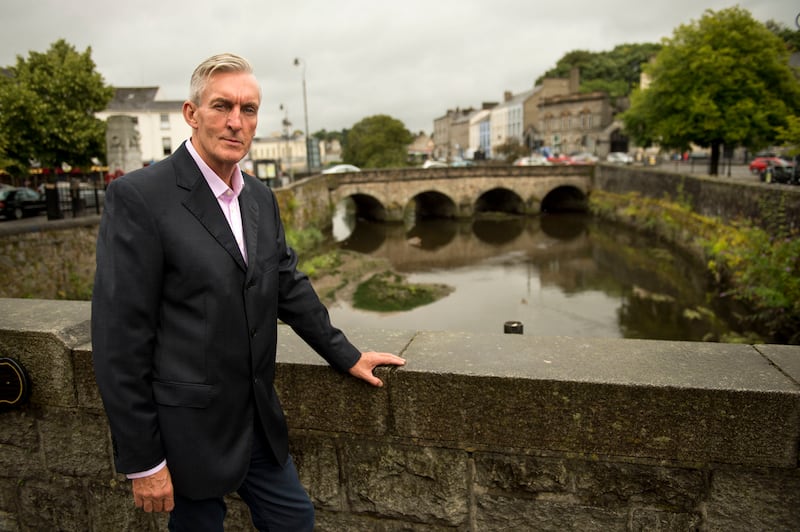
In early 2008, Mark Reynolds was working as an archivist in the Croke Park museum. He hadn't been in the job long and was exploring the stock room out the back one day. By pure chance, he came across some boxes left behind by Liam Mulvihill, who had just retired after 29 years as the director general of the GAA.
In it were Mulvihill’s various files from down the decades, including a folder marked ‘H Blocks’. Reynolds opened it and found pure gold - sheafs of letters and correspondences sent to Mulvihill across that feral year. Among them was Laurence McKeown’s, dated April 4th, 1981.
“There were handwritten letters on toilet paper, on cigarette paper and so on,” Reynolds says now. “All from within the H Blocks and within Long Kesh, addressed to the GAA. It was amazing stuff to see in the flesh really. I took it to the management of the GAA and said, ‘look, there’s some incredible things in here and they’ve never been seen before.’ In fairness, they turned around and said, ‘You should do a Masters on it’.”
So he did. Seven years and 45,000 words later, Reynolds published the most complete account yet, written on the GAA’s handling of the hunger strikes, submitting it as a thesis in DCU. There is virtually nobody better placed to reflect on the darkest period in the association’s history.
“This might sound a bit dramatic but I think it’s true,” Reynolds says. “I think there was a chance that at some stage the GAA could have lost some clubs and possibly even counties in the north over it. The feeling was so strong at club level in the six counties, there was such support for the hunger strikers there, I think that had central council tried to crack down any more than they did, they could have lost some clubs, especially in Tyrone, Derry and Belfast.
“At county board level, Tyrone were very, very… I wouldn’t say supportive of the hunger-strikers but they took completely on board what their clubs were feeding to them and they went along with it. At one stage, something like 48 clubs in Tyrone came out and openly said ‘we are in support of the hunger strikers and the GAA needs to be doing more’.
“So if Mulvihill and central council had decided to make an example of them and clamped down on it, who knows what way it could have gone? Tyrone could have left. As it turned out, they didn’t. Some clubs stepped back from competitions but no club deregistered.”
The GAA came through it and emerged the other aside bruised, yet intact. But nothing about that outcome was inevitable. Indeed, there were many days in that dog summer of 1981 when it would have seemed so far off as to be impossible.

Paddy McFlynn knew they would be coming to see him, sooner or later. As GAA president throughout that period, he had had to steel himself for all manner of encounters. He’d met with governments and gardaí, with county boards and clubs. He had been called a Brit and a Provo, often in the same week, sometimes in the same day. And all the while, the news came down from the H-Blocks, grim and black and unfixable.
Four hunger strikers died in May, beginning with Sands. Two more in July, four more through August. In all, 23 men went on hunger strike between March and October - nine were members of the GAA. Try as he might to keep the association out of it all, McFlynn knew that ignoring it was impossible.
So he was by no means shocked to receive a visit that August from a group of west Belfast republicans called Gaels Against The Blocks. For one thing, the British army had set up a checkpoint outside his Co Down home - a sure sign that they expected him to get a knock on the door. For another, the Antrim county board chairman was a friend of his and had jimmied a couple of men on to the GATB committee to keep an ear out.
“One night he rang me to say, ‘they’re coming up to see you’,” McFlynn told the GAA 125 Oral History Project in 2009. “And he was fit to tell me what demands they were going to make. So I was all very well prepared for them when they came.
“Their logic was very clear - if you’re not with us, you’re against us. They wanted me to have black flags flying in Croke Park, they wanted me to speak on behalf of the hunger strikers at half-time in the All-Ireland finals and all this. When the players marched around, they wanted the flags carried in front of the band to be black.”
McFlynn died in 2013 at the grand old age of 96. Across the span of an extraordinary GAA life, he was a founding member of Magherafelt club O’Donovan Rossa in 1934, he was the first ever treasurer of the Ulster Council in 1947, he was Ulster Council president, county secretary in both Derry and Down, and president of the Down county board. But nothing he did before or after compared to the challenges and sheer trauma of his term as GAA president between 1979 and 1982. And in particular his handling of the hunger strikes.
“I just told them that it couldn’t be done,” he said of his meeting with Gaels Against The Blocks. “I wasn’t prepared to do it and that was it. I had no authority to do it on my own, nor I wouldn’t want to do it anyway. They put on this pressure but I wasn’t able to accept anything of that kind. We just had to keep clear because it was too dangerous a situation to get involved in.”
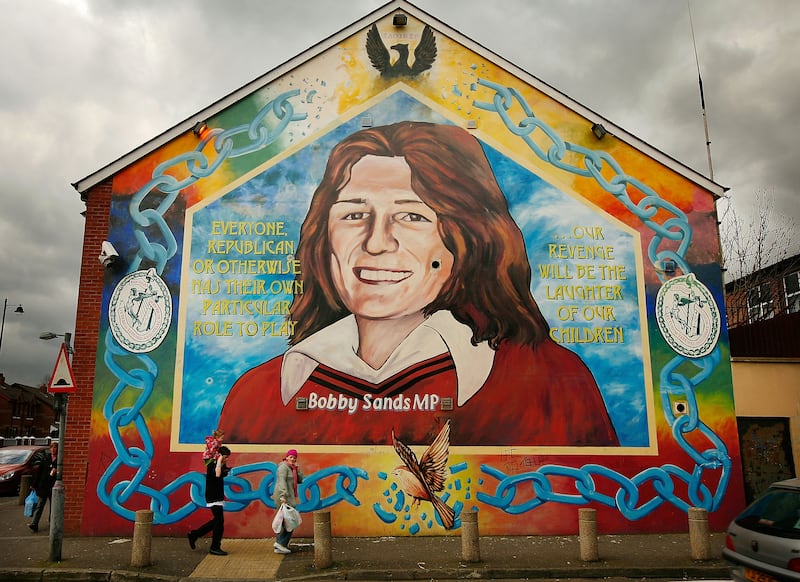
The GAA’s problem was that keeping clear was all very well as an official stance but it didn’t hold water at a local level. Throughout the back half of the 1970s, the association had tried to find ways of keeping its distance from the conflict in the North, while at the same time being careful not to make its members in the six counties feel abandoned. It was an impossible needle to thread.
The hunger strikes ratcheted everything up. Of the 420 protesting prisoners in the H-Blocks in 1981, 104 were GAA members. Outside the prison walls, GAA people and clubs in the North made it their business to show their support in public, regardless Croke Park’s desire to steer clear. It became common practice for GAA clubs to take out ads in newspapers declaring their support for the hunger strikers. Others walked in protest marches carrying club banners. Still more staged protests at matches.
That July saw Down beat Armagh in the Ulster final at Clones. At half-time, around 100 protesters ran onto the pitch and formed themselves into a 'H', carrying banners denouncing the H-Blocks and supporting the hunger strikers. Future GAA president Peter Quinn was the Ulster Council treasurer at the time and though there had been rumours beforehand of a protest, he hadn't imagined they would stage it on the pitch itself.
“We thought it would be outside either beforehand or after the game was over,” Quinn told Mark Reynolds in 2014. “Four senior members of the Ulster Council got together very quickly and agreed that the secretary should go down and ask the gardaí not to intervene.” Quinn was not alone in worrying that a heavy-handed reaction from gardaí could have caused an Ulster final riot.
The Ulster secretary who went to talk to the gardaí was the late Peter Harte, brother of Mickey, and a crucial member of the brains trust that steered the GAA through that period. The fact that he was from Tyrone and that McFlynn, as GAA president, was from Derry and based in Down, meant that the decision-makers were sensitive to all angles and pitfalls. They were well placed to judge when to stand back and when to get involved.
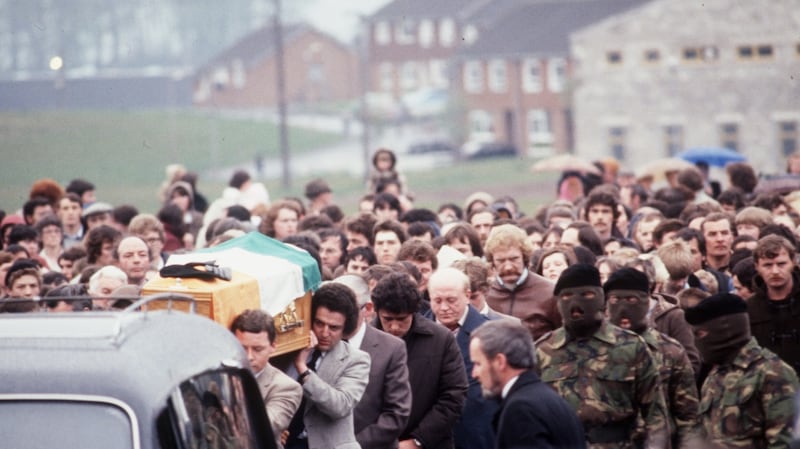
Ultimately, their hand was forced when Sands stood as a candidate in the Fermanagh/South Tyrone byelection in on April 9th. Up to then, Croke Park could just about feasibly stay out of it all, turning a blind eye to clubs supporting the hunger strikers on humanitarian grounds.
But with the election of Sands as an MP and with the certainty that more hunger strikers would be candidates in that summer’s general election in the south, the GAA now had no choice in the matter. They were bound by their own Rule 7 banning party-political statements of support.
Mulvihill was forced to issue a statement to county boards in early June, warning of the change in policy, stating, “it is not possible for GAA clubs, county boards or other units to be involved in any way”. In a nod to how delicately he felt he had to tread, however, he entered a caveat at the end: “what members do as individuals will, of course, be their own business.”
“If those elections hadn’t taken place,” says Reynolds, “I think the GAA would have quite happily just left the clubs to get on with doing what they were doing themselves. They tried their best to stay out of it at central council and provincial council level. They were prepared to let the county boards and the clubs at a local level do what they want, even if that meant breaking their party-political rules. But the elections changed everything.
Through that summer, Mulvihill, McFlynn and their counterparts in the Ulster Council had an enormous job on their hands to keep the association’s seams together. Northern clubs were constant in their beseeching of Mulvihill to get the GAA to do more, to show more full-throated public support.
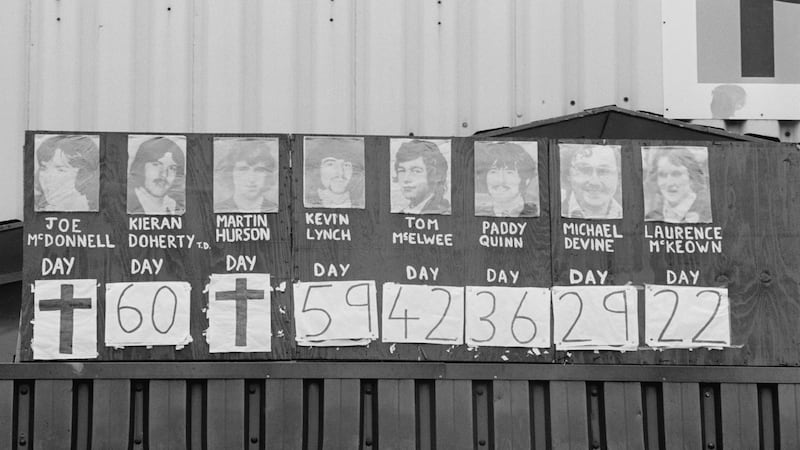
It was a tortuous balancing act for the GAA. Plenty of members south of the Border had very little sympathy for the hunger strikers, particularly after the INLA had murdered two gardaí, John Morley and Henry Byrne, during a robbery the previous year. Morley was a former Mayo footballer and the disgust that followed put the Garda and much of the general public at odds with any GAA support for the prisoners. And yet, as Paddy McFlynn pointed out, the GAA could hardly pretend they didn't exist.
“The H-Block people wanted the GAA, which would have been a ready-made base in each parish, to parade for them. But we were resistant to that at all times. The parents of young teenage boys did not want the GAA to be parading with black flags and young men being involved and then becoming actively involved in the troubles that were going on. We had to keep the GAA clear of all problems.
“And at times it was very, very difficult because these young men who were dying, some of them were members of the association. And not only that, there was the fact that they came from a community. So therefore, whether you agreed with them or not, they were part of your community and so had to be supported.”
The last hunger striker died at the end of August, after which families began to intervene. As work went on behind the scenes, one-by-one the remaining prisoners came off their strikes. Laurence McKeown’s mother stepped in after 70 days to put it to an end.
“The families were in a terrible dilemma,” McKeown said. “They weren’t IRA volunteers. They had seen one person die after another and no hope of our demands being met. Our families were suffering more on the outside and my mum had always stood by me throughout my life, when I was on the run, in jail. There was no way I was going to be angry with her.”
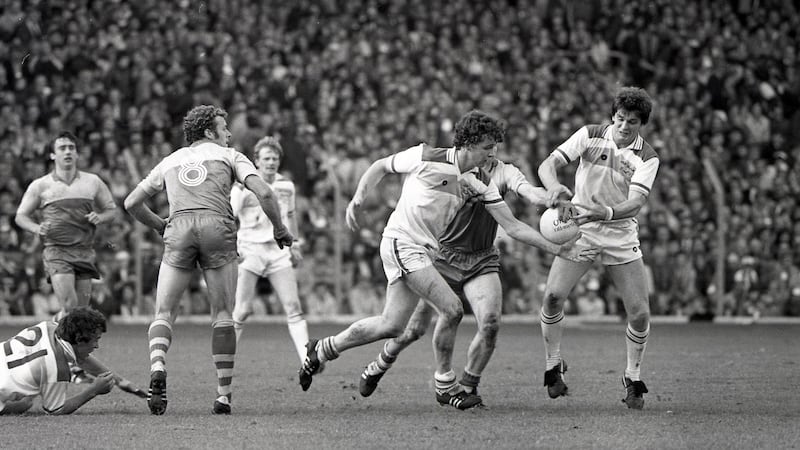
McKeown’s hunger strike ended on the day of the All-Ireland hurling final. A fortnight later, a couple of demonstrators jumped onto the pitch at half-time in the football final between Kerry and Offaly. The Irish Times reported that they “got little attention”.
Over the years, the hunger strikes and the long black summer of 1981 receded into the background. There were intermittent controversies surrounding the naming of clubs and grounds after the hunger strikers but it was nothing the GAA couldn’t handle. In a way, that was the most surprising thing Reynolds found during his research. The major legacy of the hunger strikes for the GAA was that there was no major legacy.
“I was amazed at that,” he says. “It was a terrible time and a really tough six or seven years but when you look from 1982 onwards, it didn’t really leave a residue. There was no split, there was no county or club who withdrew over it, there was no leftover animosity between the GAA and the media or the GAA and the Garda. It just seems to have been that it was a terrible time when it was happening but when it was over, it was over.
“That was a result of how the GAA handled it. They knew when to back out of it. They knew they weren’t going to win the hearts and minds of the GAA clubs in Belfast so they didn’t take them on. And what it meant was that when the whole thing was over, there was little or no after-effect.”
The GAA survived. That was after-effect enough.
















